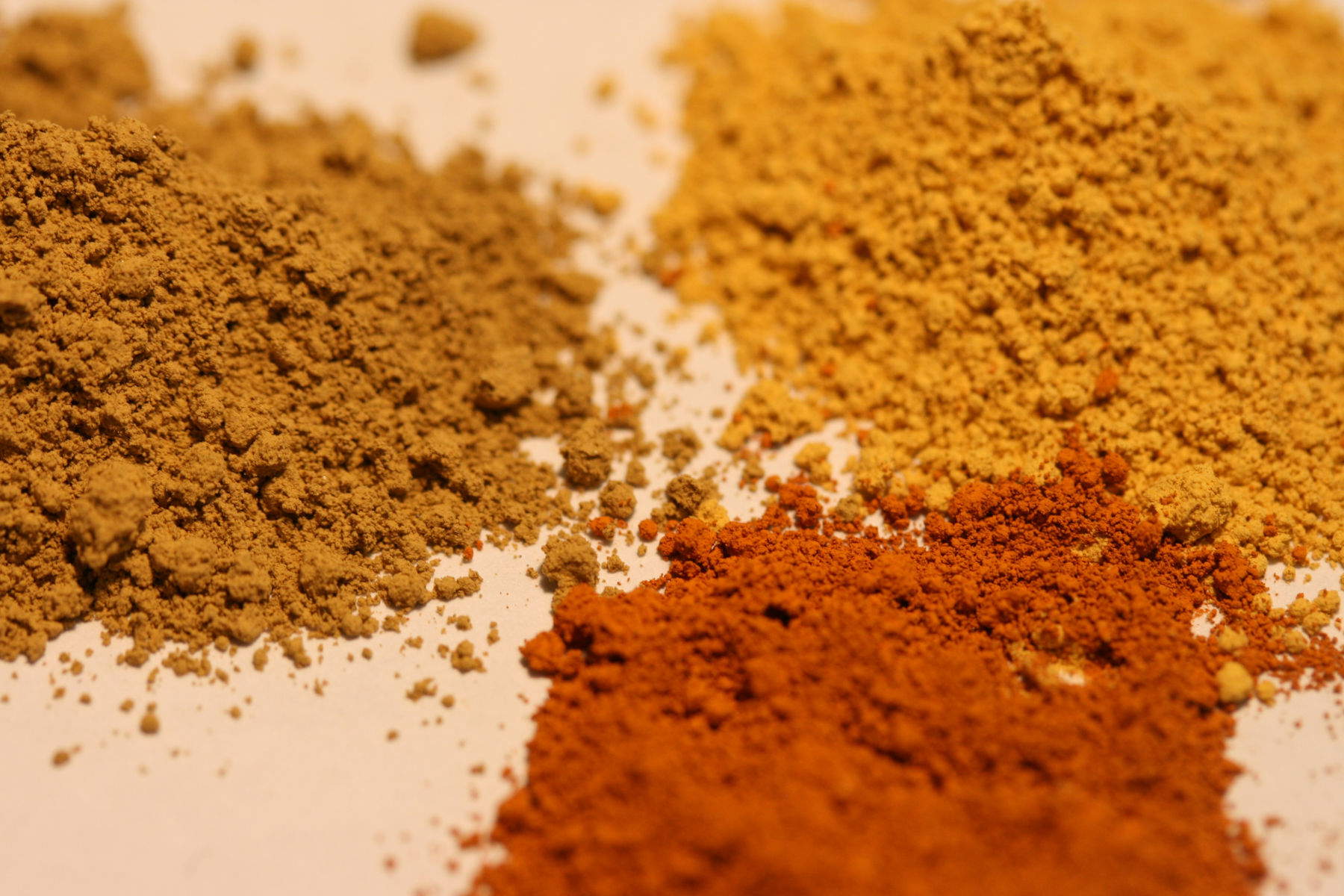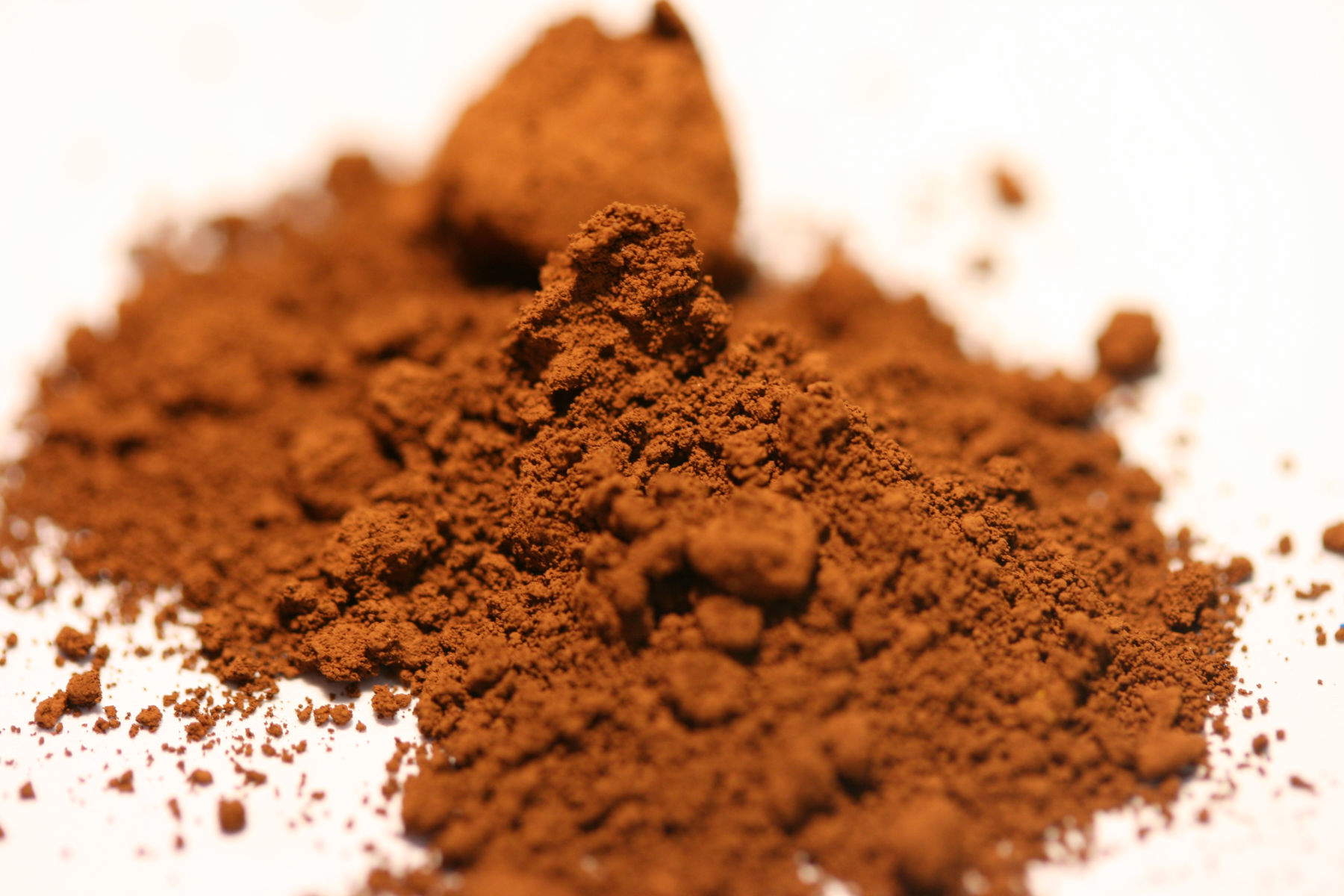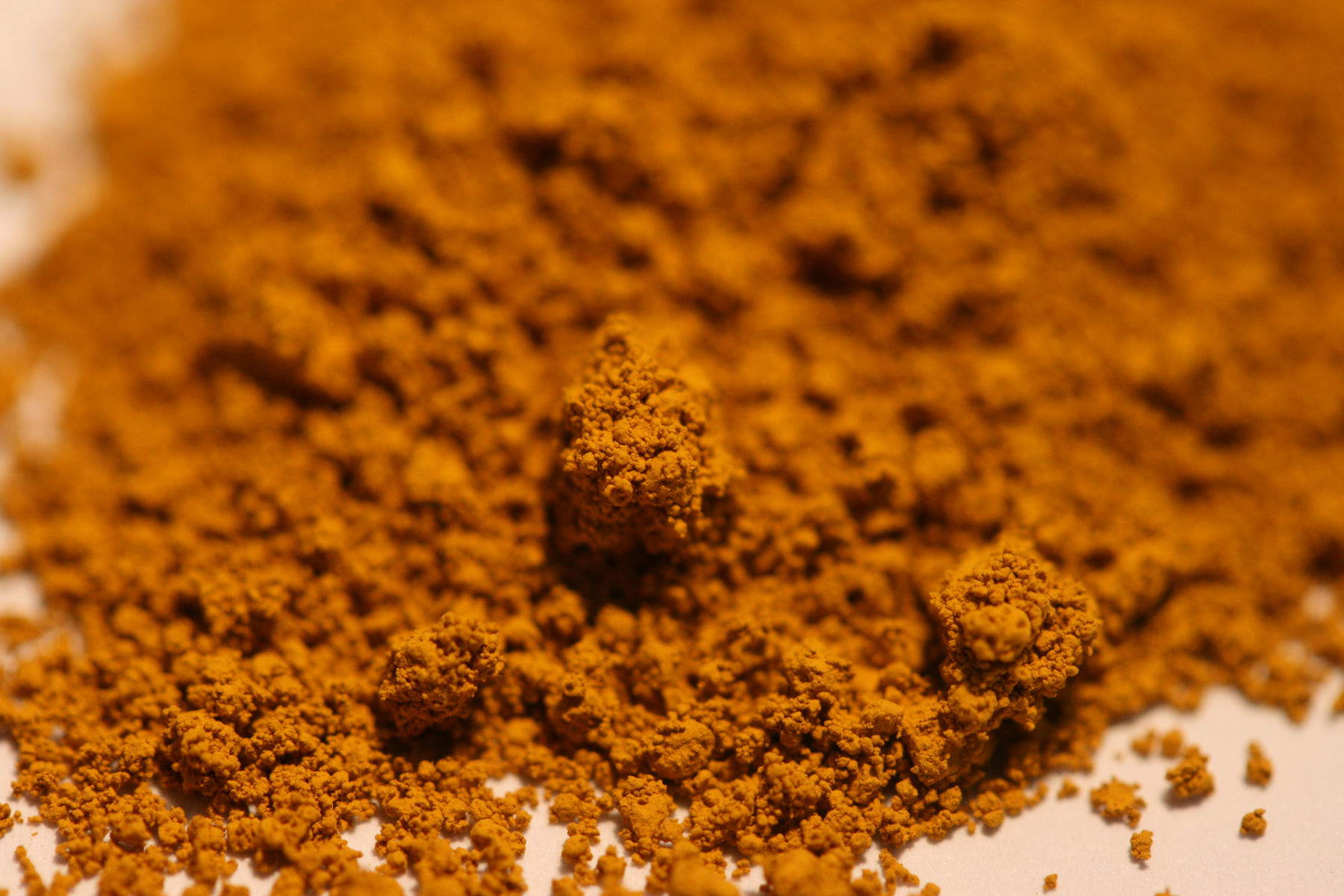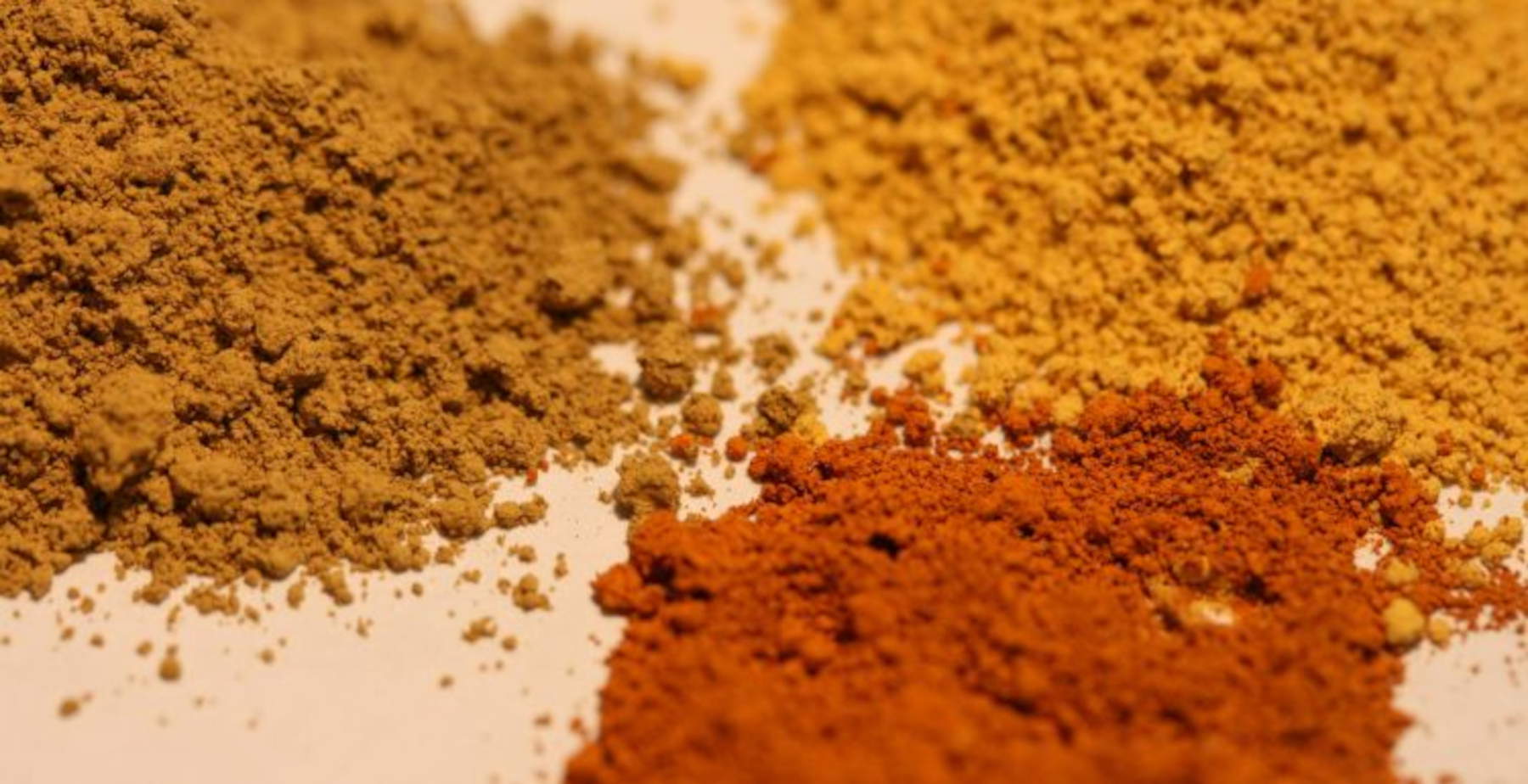Over the past two decades,ochre has become a key archaeological marker for understanding the origins of symbolic culture in human societies. The perception of color, which affects languages, rituals and collective identities, is a universal feature of cultural experience. But the moment when colors took on symbolic value, transcending mere material function, still remains a subject of investigation. The deliberate use of coloring materials such as ochre, collected, processed and employed with specific techniques, constitutes one of the first tangible traces of this transition.
As reported by the journal Science within a research paper published just a few days ago (first signatory is Italian Francesco D’Errico of the University of Bordeaux), within the archaeological context, the term ochre denotes iron-rich mineral materials with red, yellow or orange hues. When these are modified to produce coloring powders or to leave intentional marks, their use takes on an interpretive significance: one then speaks of a pigment or marking tool. Symbolic use, strictly speaking, is recognized when contextual and technological evidence converge to indicate a communicative or identity function.
Contrary to popular belief until a few decades ago, the use of ochre does not correspond to a sudden breakthrough in human history, but to a gradual evolution that involved several fossil species. The earliest traces of materials rich in iron oxides, potentially used as pigments, date from about 400,000 years ago in both Africa and Europe. In truth, the difficulty of distinguishing practical from symbolic uses makes these records ambiguous. Some scholars argue that the symbolic function of ochre cannot be proven without direct evidence; others point out that, in traditional societies, utilitarian and symbolic aspects are inseparable. According to the latter perspective, continued use of ochre over time would inevitably have taken on cultural value as well.
To distinguish between the two hypotheses, archaeological research has focused on characterizing the behaviors associated with the processing of dye minerals: from preference for certain hues to the search for distant raw materials, from cooking rocks to change their color to the production of abstract signs or personal ornaments. A recent study identified 87 African sites, dated between 500,000 and 40,000 years ago, from which more than 25,000 ochre fragments came. Analyzing the chronological distribution of the finds, the authors distinguish three phases in the use of ochre during the Middle Paleolithic: an early phase (500-330,000 years ago), an emerging phase (330-160,000) and a habitual phase (160-40,000). In the latter phase, the systematic presence of ochre in archaeological contexts is interpreted as indicating an intensification of ritual activities among early Homo sapiens.

In Europe, the use of ochre is attested at numerous pre-Upper Paleolithic sites. The oldest include Terra Amata, near Nice, dated to about 380,000 years ago, where 77 ochre fragments were found, some with traces of polishing and heating. Other important finds come from Maastricht-Belvedere in the Netherlands, Achenheim in France and Bečov I in the Czech Republic, all dated between 250 and 200 thousand years ago. During the Mousterian, the use of coloring minerals became widespread throughout the continent. Fragments of ochre and manganese, modified by scraping and grinding, have been identified at sites such as Combe-Grenal, Le Moustier and La Ferrassie in France, Cueva de los Aviones and Cueva Antón in Spain, and the Grotta di Fumane in Italy.
In the final stages of the Middle Paleolithic, Neanderthals associated with the Châtelperronian techno-cultural complex (45-42 thousand years ago) employed large amounts of red ochre and manganese oxides. Analyses of residues found on bone tools from the Grotte du Renne at Arcy-sur-Cure suggest the use of ochre compounds for tanning and coloring skins, perhaps intended for clothing. In other contexts, such as Cueva Antón and Fumane, ochre was applied to shells and rock surfaces, a sign of possible decorative and symbolic use.
The oldest evidence in Asia comes from the Acheulean site of Dashatadem-3 in Armenia and Hungsi in India, where fragments of hematite appear to have been transported from distant sources. In Siberia and China, ochre appears in various Middle and Upper Paleolithic contexts, with evidence of scraping, grinding, and intentional carving. In Lingjing, Henan province of China, microscopic residues of ochre have been identified within engravings on a bone dated to about 125,000 years ago, possibly associated with the Denisovians.
The new study focuses on the use of ochre by the Crimean Neanderthals, particularly within the Mycoquian complex, a regional variant of the Mousterian characterized by bifacial tools. Despite receiving little attention in the past, the use of ochre in this area has long been attested. As early as 1983 Kolosov described an ochre fragment with traces of scraping from the Zaskalnaya VI (ZSKVI) site. Subsequent research identified additional finds in the Micoquian levels of the Zaskalnaya V (ZSKV) and Prolom II (PRMII) sites, many of which show signs of processing and reuse.
Altogether, the Crimean archaeological collections count 291 ochre or ochre-stained objects, although not all have been verified as intentionally collected and modified materials. The concentration of sites in a small area, within a two-kilometer radius, provides a singular opportunity to study the ways in which color was procured and processed in relation to the different cultural subgroups of the Mycoquian.

The study presented by Science analyzed sixteen ochre samples from four sites: seven from ZSKV, five from ZSKVI, two from PRMII, and two from Mukhovets (MUH) in Ukraine, the latter used for comparison. In addition, four natural samples were collected from an Oligocene clay formation in the vicinity of the Crimean sites.
Mineralogical, chemical, and morphological investigations revealed a wide variety of materials, from red and yellow ferruginous argillites to concretions and ferruginous limestones, used in the form of fragments, pebbles, and molded flakes. The surfaces of many specimens show obvious traces of intentional scraping, abrasion and chipping, indicative of the production of coloring powders of different grain sizes. A case in point is specimen ZSKVI-01, a ferruginous crust fragment showing multiple signs of processing. The incisions, oriented in various directions and of different depths, suggest a deliberate action aimed at extracting the red powder. Subsequent modifications and smoothing testify to prolonged use and possible function as a tool for grinding or applying pigment.
Sedimentological analyses of the deposits in which the fragments were found indicate that the ochre did not come from natural sources in the sediments themselves. In fact, local iron ores are scarce and dispersed, lacking macroscopic concretions. This implies that Neanderthals deliberately collected and transported coloring materials from other places, perhaps sorting them by color and texture.
The combination of technological, contextual, and experimental evidence suggests that Crimean ochre was used not only for practical purposes, such as tanning hides or protecting against the weather, but also as a means of symbolic expression. The presence of coloring tools, repeated use of some pieces, and traces of intentional marking indicate that color was also inscribed, not just applied, thus taking on a communicative function.

The results of the study broaden our understanding of the cognitive and cultural sophistication of the Micoquian Neanderthals in Crimea and of Neanderthal cultures more generally. Stratigraphic and chronological analyses of the finds show that the use of ochre lasted for a period of about 70,000 years. The ochre-containing levels extend from layer VI of Zaskalnaya V, attributed to MIS 5c (about 100,000-90,000 years ago), to layer II of Zaskalnaya VI, dated between 33,000 and 36,000 calibrated years before the present.
Evidence from the Crimea enriches the still-evolving picture of Neanderthal symbolic behavior. The systematic use of ochre, the selection of raw materials and their conscious manipulation reflect an articulated cultural dimension in which color is configured as a material language.
The study was based on the analysis of 16 ochre fragments from Zaskalnaya V and VI sites, selected for clear identification as rocks with coloring properties and for the presence or potential presence of anthropogenic modifications. Archaeological literature reports a total of 291 ochre fragments or reddened stones for Crimean Paleolithic sites, but many present uncertain status and have not been systematically verified. Some finds that were small in size or too thin were excluded because they were incompatible with reliable pXRF analysis.
All materials were documented photographically with a Canon G7X camera equipped with elements to reduce distortion and improve image quality. Microscopic observations were conducted with a Leica Z6 APOA motorized microscope equipped with a DFC420 digital camera and LAS Montage and Leica Map DCM 3D software. A detailed descriptive sheet was prepared for each fragment, including contextual, technological, and morphometric information (site of origin, stratigraphic level, size, weight, raw material type, color, morphology, and traces of modification).
The results reported by Science, made all the more valuable by the difficulties in accessing sites due to the current political situation in the region, open new perspectives on the ability of Neanderthals to ascribe meaning to the world around them. Ochre, from a simple mineral, emerges as a silent witness to a shared symbolic thought, anticipating the expressive practices that would define modern humanity.
 |
| Were Neanderthals artists? New analysis suggests symbolic uses of color |
Warning: the translation into English of the original Italian article was created using automatic tools. We undertake to review all articles, but we do not guarantee the total absence of inaccuracies in the translation due to the program. You can find the original by clicking on the ITA button. If you find any mistake,please contact us.